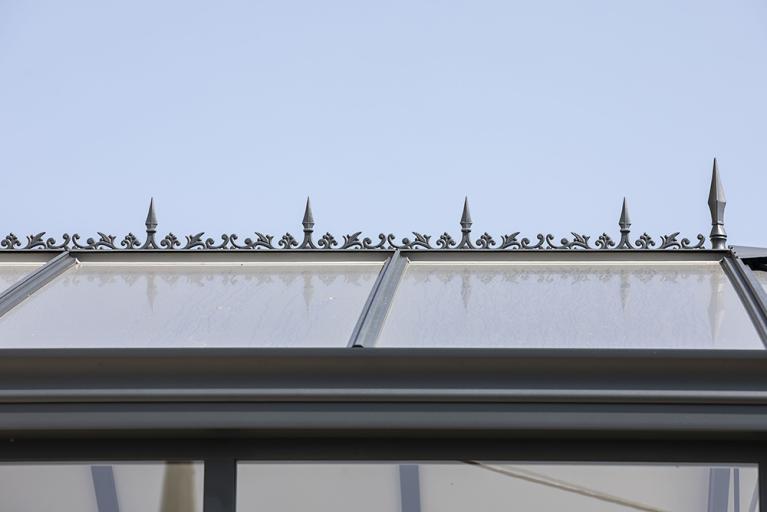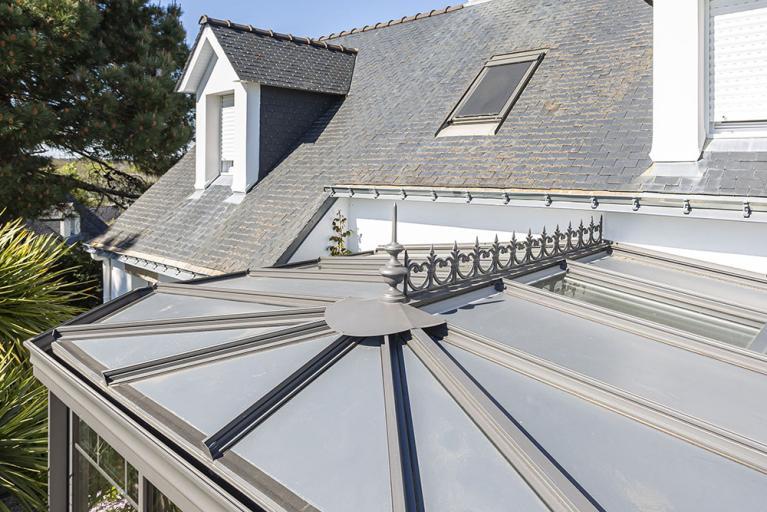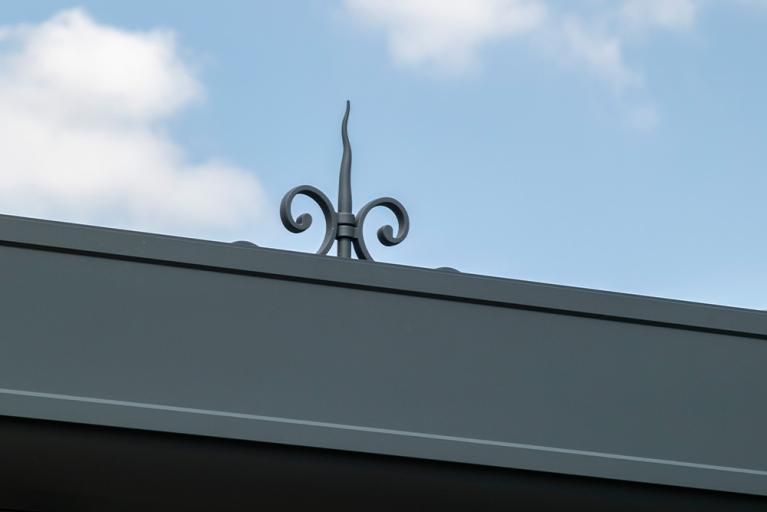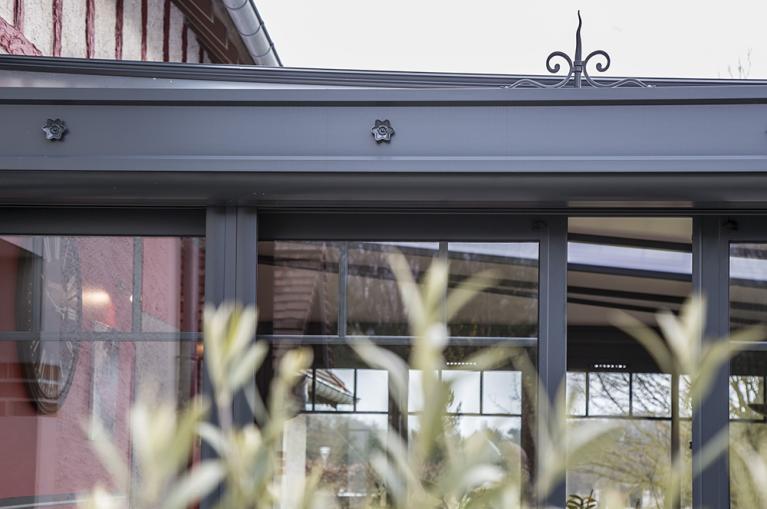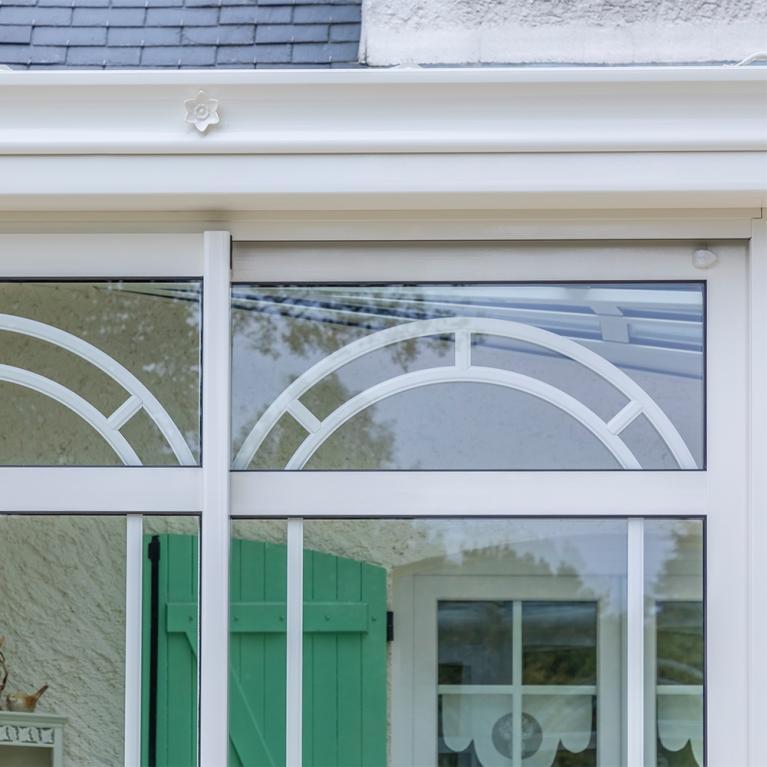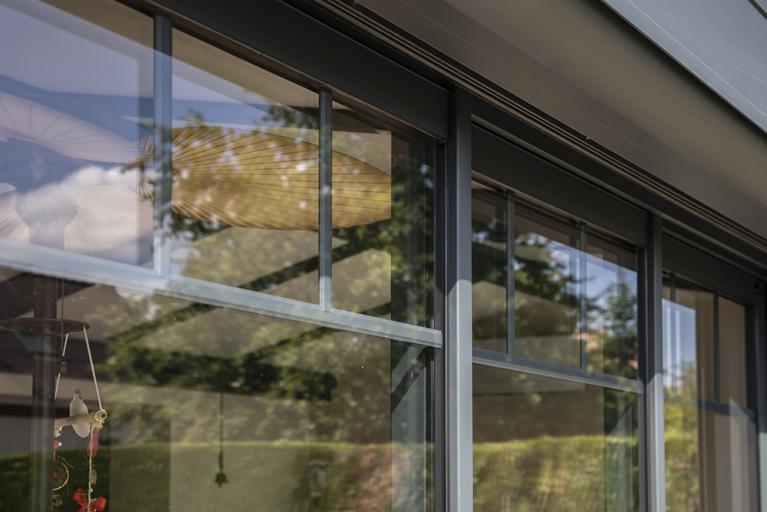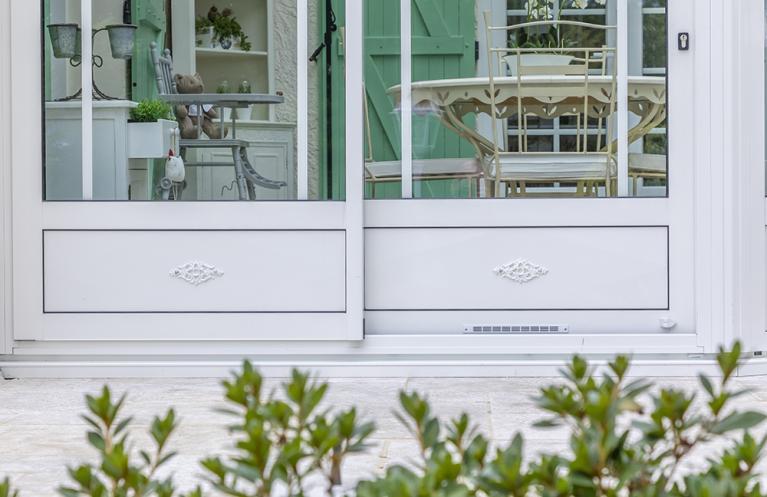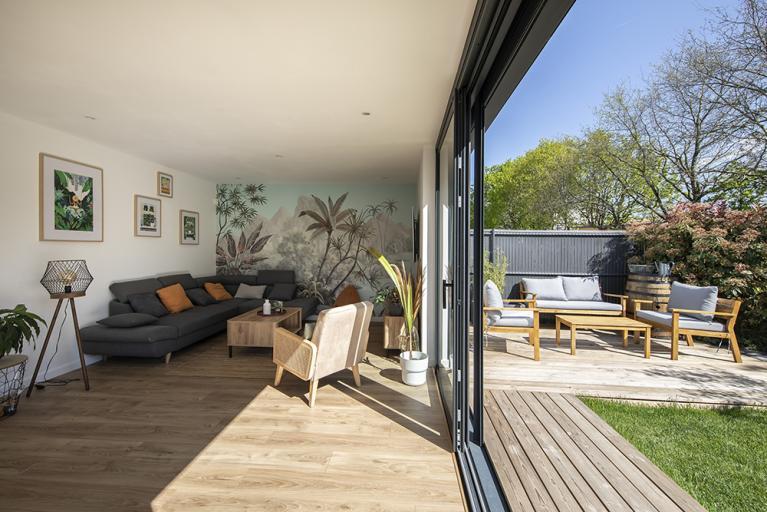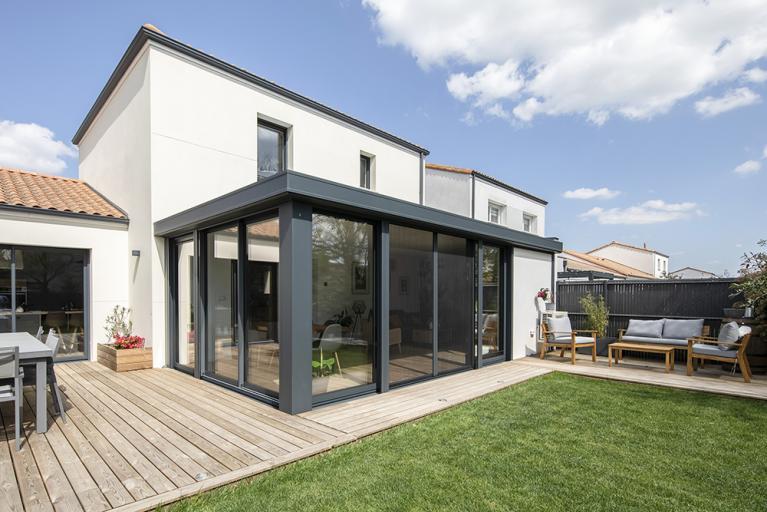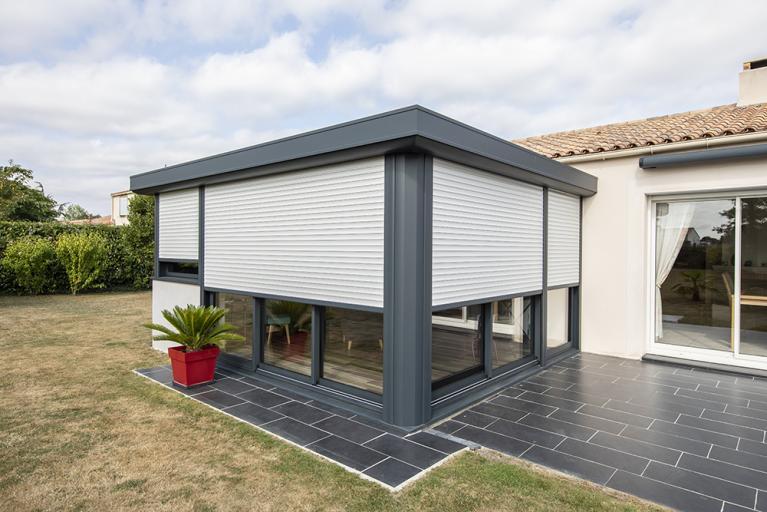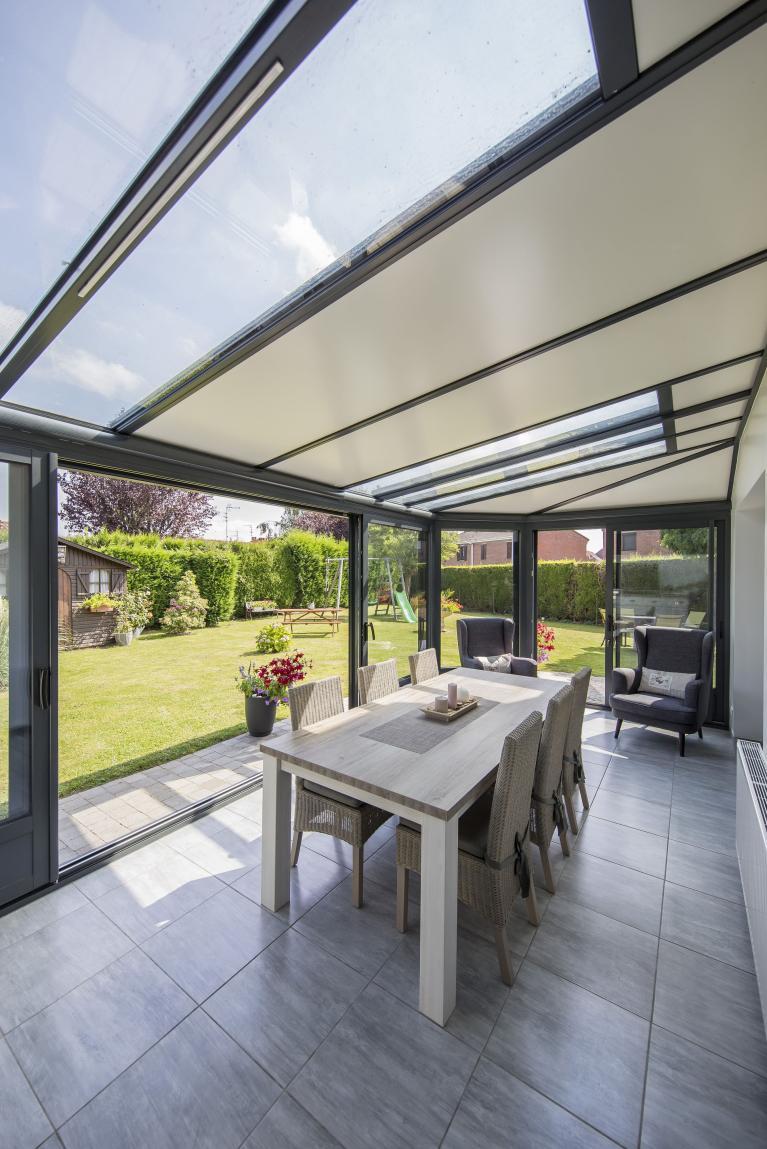Conservatory colours and style
AKENA offers you a wide choice of colours and decorations. From light to dark colours, to match the colour of your house plaster or your shutters or openings, everything is possible. And pretty colours are good, but colours that stand the test of time are even better. That's why at AKENA, the quality of the lacquering is a priority.
The same goes for decoration and customisation. Our technical advisers can suggest a wide range of decorative options, including base frames, hangers, aluminium, silver or brass edgings, and a choice of cornices, to ensure that your conservatory is like no other.
The colour of aluminium
When designing your project, the choice of colour is crucial. Whether you have a contemporary or a traditional home, our technical advisers will help you to determine the colour that matches your wishes, the style of your home and your region.
You can choose from classic colours: anthracite grey, white, beige, frosted grey, black, etc. Bright colours: green, blue, red... Or any colour you like - it's all possible! Our colours also come in a range of finishes: textured, gloss, satin and matt.
At your appointment, your technician will use his colour chart to show you the final result of the colour. Here are some of the most common examples: textured frosted grey, textured architect grey, textured anthracite grey, textured sandblasted black, textured light beige, gloss white...
Colour chart
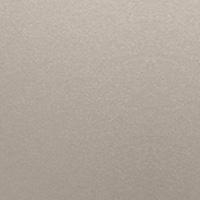
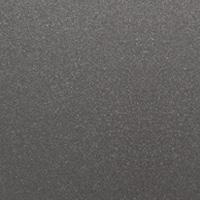
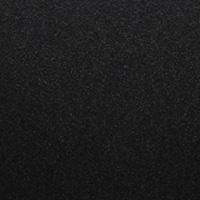
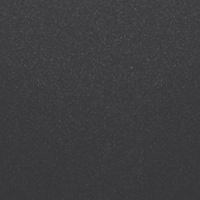


Textured colours
The aluminium profiles used by AKENA to manufacture its conservatories, pergolas and carports are lacquered using innovative, high-performance powders with a textured finish that are QUALICOAT and QUALILAQUAGE Class 2 approved.
Unlike Class 1 colours, textured Class 2 colours have raised areas and irregularities in the aluminium that are less sensitive to UV rays and external aggression. They are therefore more resistant, vary much less and are less prone to bleaching than Class 1 colours.
The benefits :
- Increased resistance and protection of aluminium
- Colour retention and protection against bleaching
- Preservation of the long-term value of the conservatory or pergola and its contribution to the enjoyment of the home
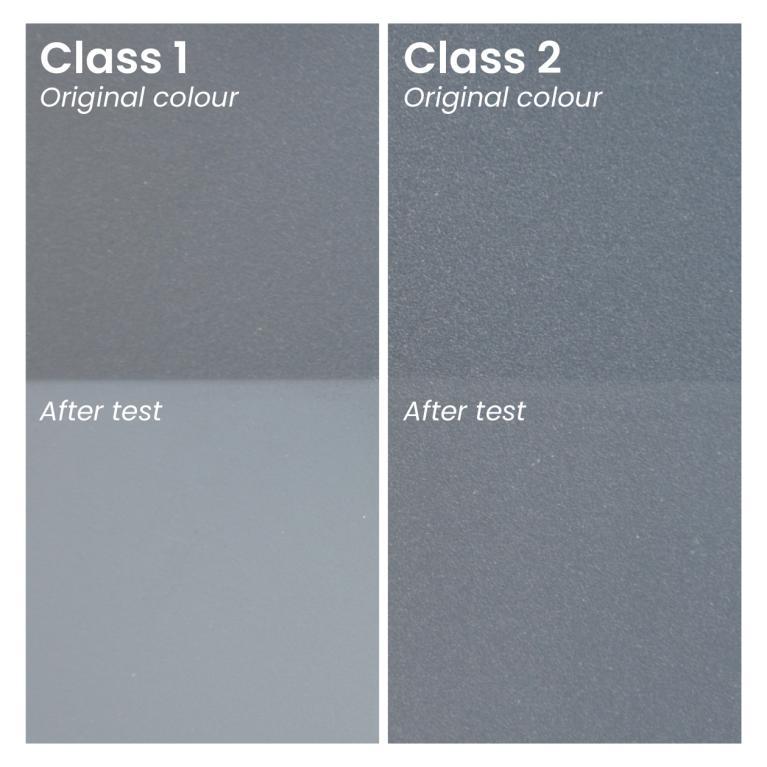
Wooden wall cladding
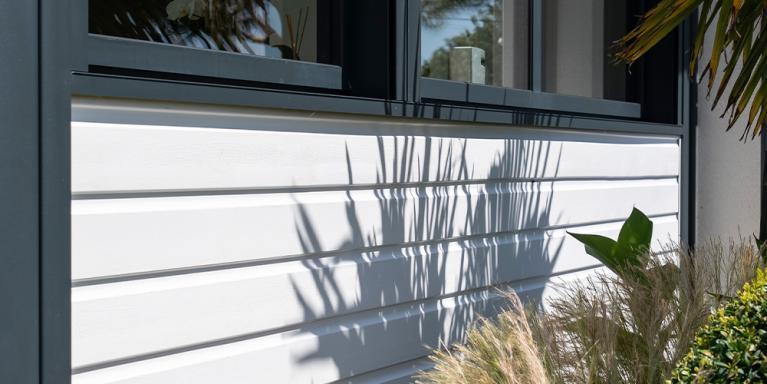
Wood-look cladding
The wood-frame module combines thermal performance with aesthetic appeal. In addition to its insulating and watertight properties, its wood-look cladding adds a contemporary touch to your conservatory.
The low wooden wall is an alternative solution to often costly and time-consuming masonry work. Thanks to the use of glass wool, OSB and waterproofing, you can add extra insulation to your conservatory to ensure a pleasant indoor climate at all times.
And let's not forget its durability: wood-look cladding is impact-resistant, weather-resistant and mould-resistant. Durable over time, it is designed to prevent the colour from cracking, and prevents any untimely intrusion by insects or animals, thanks in particular to the anti-rodent grille.
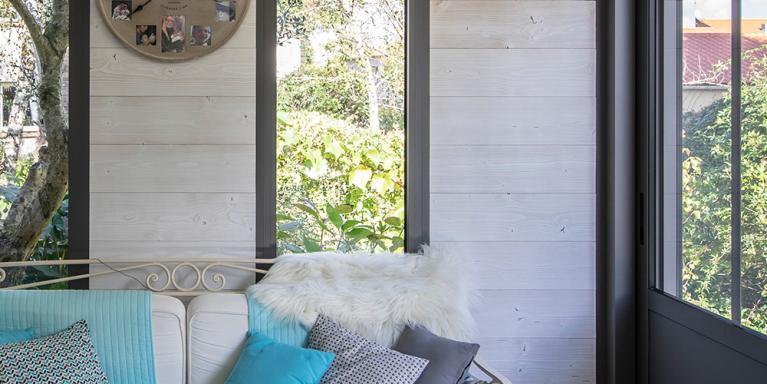
Interior panelling finish
If you choose white ceruse panelling on the inside, you'll get an impeccable finish without any touch-ups, and your conservatory will look as good as new! It's easy to clean with soap and water.
Ideal for conservatories with kitchens, dining rooms or offices, the wooden batten half-wall facilitates interior design and optimises the position of furniture. It also protects your furniture from UV rays and helps to preserve its colour. What's more, the possibility of adding electrical sockets in these timber-framed modules makes the space more functional.
Colour chart
Exterior cladding :
The low wooden wall comes in a range of colours, so you can personalise your conservatory to match the style of your home:
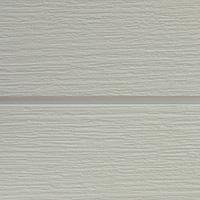
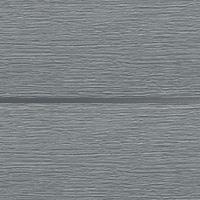
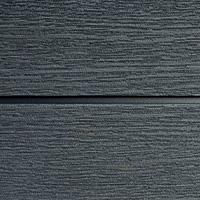
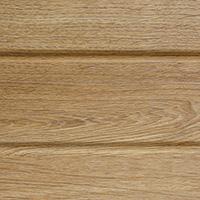
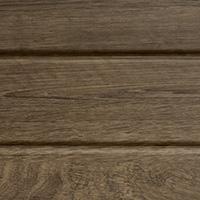
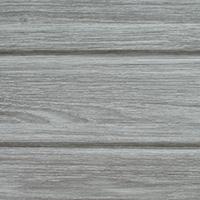
Interior lining :

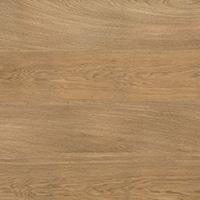
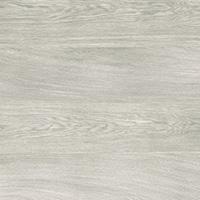
Finishing cornices
The cornice for your conservatory is placed in front of the gutter, the rainwater collection basin for the conservatory roof and the roller shutter box, to conceal it and dress it up. The cornice completes the roof and, above all, gives style to your conservatory. This roof profile reinforces the aesthetic lines of your extension. You can choose from the following cornices:
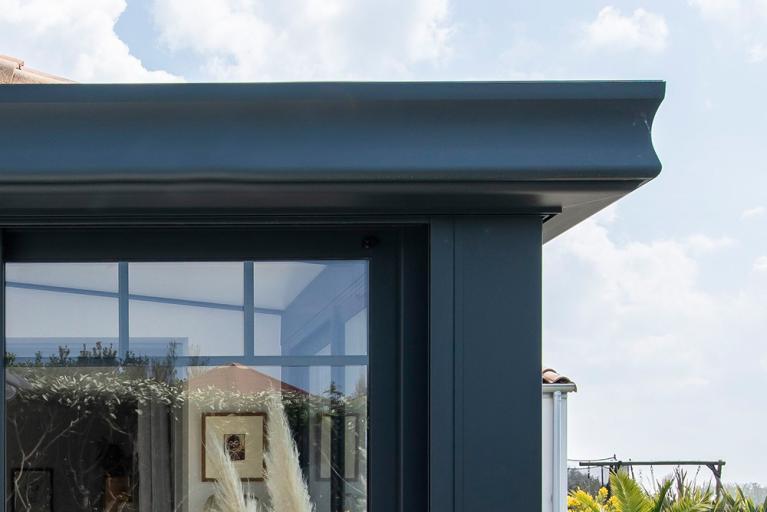
Traditional
With mouldings and more curves
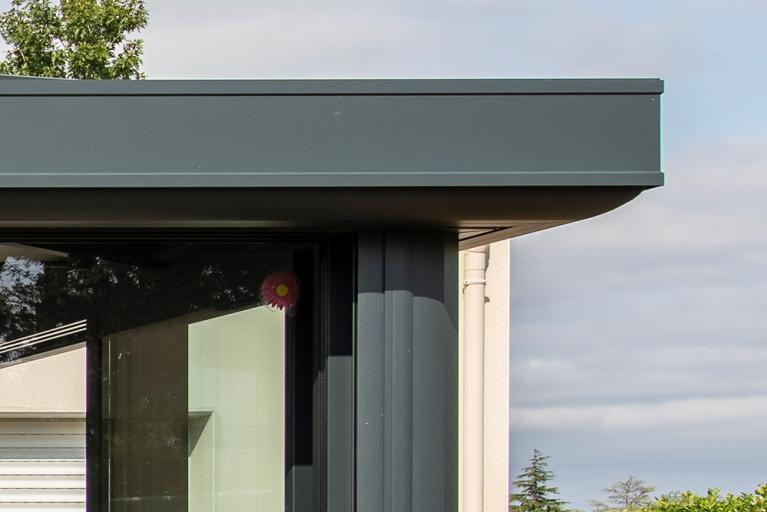
Contemporary
With straighter, sleeker shapes
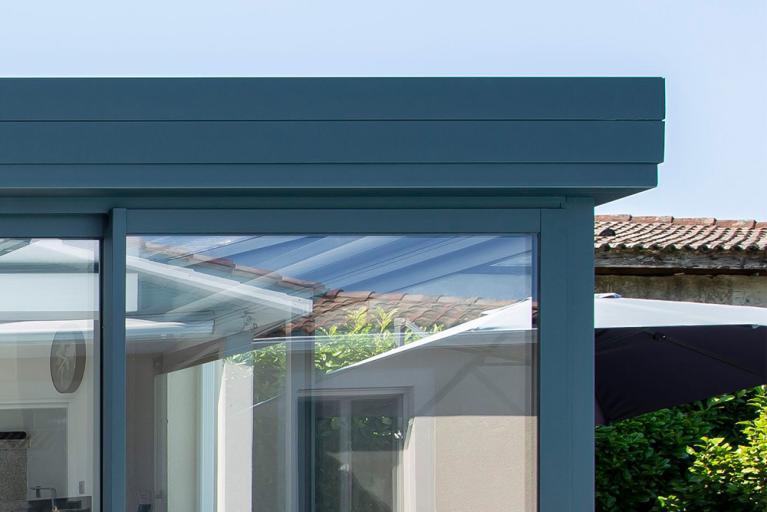
Design
With straight shapes and a useful height to hide the roof and give a flat roof effect
The objective is the same: to give a tone and character to your new enlargement so that you can make it your own and integrate it into your existing living space. Better still, the decorations and cladding on the front will add originality and a touch of difference, making it a charming addition to your home. The added value created could make you fall in love with your home and make it easier to buy if you want to sell.
AKENA supports you in your project
Has your conservatory project evolved in your mind? Is it becoming more concrete? Perhaps it's time for you to contact us. The consultant technician working in your area will be available at your home or at the agency to advise you and, if you wish, to draw up a free 3D estimate.
If you have any questions...
-
How do you choose the right paint for your conservatory?
-
The advantage of aluminium conservatories, apart from their strength and ease of maintenance, is that you can choose the colour of the uprights to suit your taste.
Gone are the days when all conservatories looked the same: in dark wood or with white uprights between the windows. Nowadays, conservatories can be decorated in red or blue, if that's what you want.
However, for the sake of harmony, don't forget that the conservatory's colours should match those of the house. When making your selection, take into account colours that have already been applied to your window frames or shutters, for example. If you choose colours that are too radically different from those already in place, you run the risk of creating an untidy whole. On the other hand, you can opt for a contemporary-style conservatory with a traditional house to play up the contrasts.
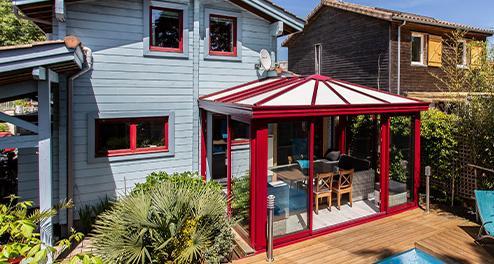
-
What colour for a conservatory wall?
-
The colour of a conservatory front depends on your taste and the design of your home extension. The colour of your conservatory should be in harmony with your house and its surroundings: the neighbourhood, local or regional customs, any legal obligations if you are on a listed or protected site, etc. In most cases, the conservatory's interior front remains identical to that of the rest of the house, but the addition of a conservatory can be an opportunity to revise its appearance.
For example, choose a white that goes well with any style of home, or a charcoal grey for a house extension with acontemporary feel. To keep in with the traditions of your region, note that burgundy red is specific to the Basque country and blue to the Atlantic coast. Brown also goes well with mountain chalets. You can also dare to use bright colours to liven up your home, such as fuchsia pink, bright red or indigo blue.
Always remember to strike abalance with your outside décor: ideally, the colour of the wall should be used in at least one feature of your garden, or on your gate, for example.
-
What colour for the inside of a conservatory?
-
As in the other rooms of the house, you choose the colour according to the effect you want to achieve. It is common to find floors in the same shades between the inside and outside, designed as an extension of each other. A light-coloured floor will bring more light into the conservatory, while a darker floor, although rarer, adds depth.
But touches of colour can also be found in the furniture and decor of your conservatory. Whether you choose metal, wood or even plastic furniture, the choice of colours is yours. The more colourful ones will create a more modern atmosphere, far removed from the classicism of an anthracite wrought iron table, for example.
In all cases, if you opt for colour, choose materials that will retain their brilliance despite prolonged exposure to the sun: solution-dyed plastic is often the least resistant of all in this respect.
Limit yourself to a total of two or three main colours in the room, to be reproduced in the cushions, or even in the crockery or vases that will be used in your conservatory.
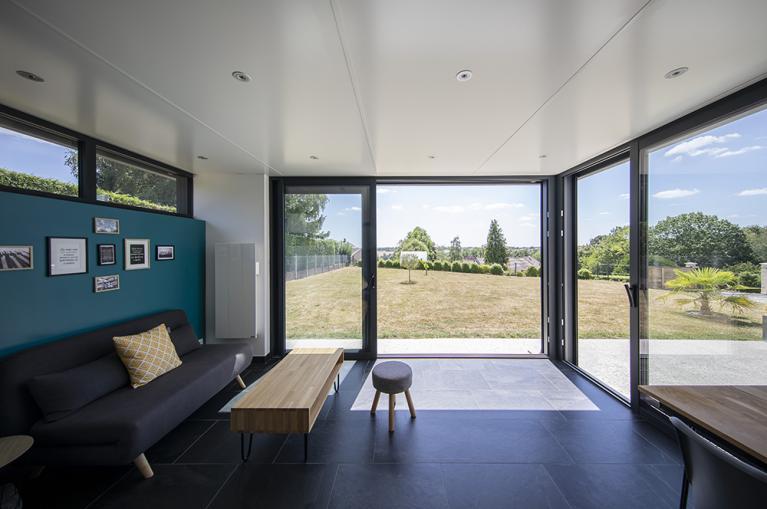
-
How do you choose the right colour for your conservatory to cope with the weather and maintenance?
-
Aesthetics are paramount when choosing a paint colour for your conservatory. But don't forget the weather too. Unlike a PVC conservatory, whose surface is more sensitive to weather conditions, an aluminium conservatory's colours hold up well over time.
Don't forget to look after your conservatory too. Some colours are dirtier on the outside, but unlike other materials, an aluminium conservatory only needs to be cleaned with water.
In our Akena agencies, we offer you our conservatory experience to help you choose the right conservatory colour.
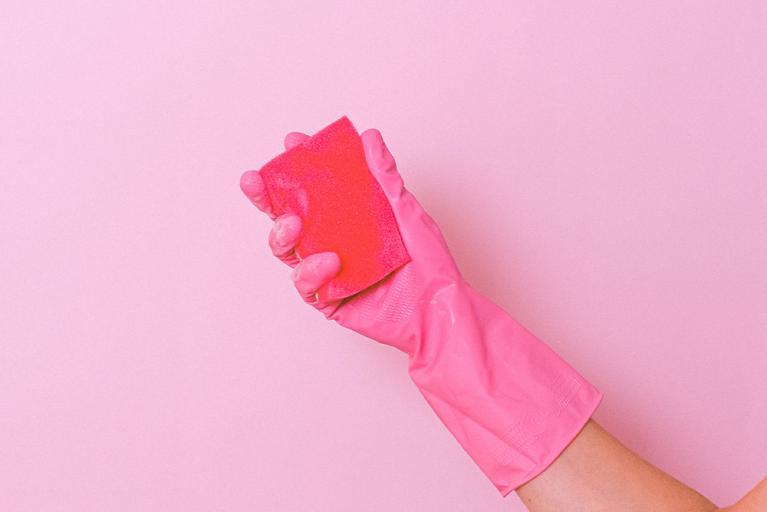
Commitment to quality
You have a project?
Would you like a personalised 3D study and a free quotation? Contact us by clicking below.
AKENA is...
Over 40 years of experience
Founded in 1981 by one man, we now have more than 500 employees dedicated to making your project a success.
Made in France
A historic site and two factories covering more than 25,000 m² in Dompierre-sur-Yon in the Vendée region (85)
Innovative and tailor-made products
At AKENA, we are brimming with new ideas to improve and enhance our products.
The European leader in conservatories, pergolas...
But not only! AKENA also offers a complete range of carports and pool houses.
